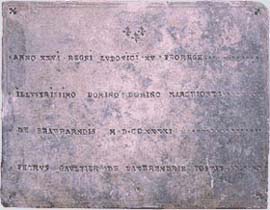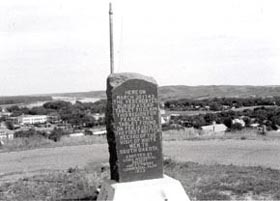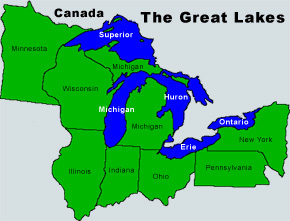|
Lesson
4
Europeans Visit South Dakota
|
| |
|
We marched
"over magnificent prairies where wild animals were
plentiful," wrote François La Verendrye. He was a French-Canadian. He and his brother,
Louis-Joseph, were on a
trek
across South Dakota. It was 1743. The brothers met the Arikara and Mandan
peoples. They were looking for the Northwest Passage. They thought
the Northwest Passage would be a
river that would take them across North America to the Pacific
Ocean. But the brothers turned back. A mountain range, perhaps the
Black Hills, blocked their path. On their way back, they buried
"a lead tablet" on a hill near Fort Pierre. They
"placed some stones in a pyramid" over the top.
|

Verendrye
plate
|
| |
|
|
The stones toppled and disappeared. No one knew where the lead
tablet was buried. No one, that is, until a group of Fort
Pierre high school students found it one hundred seventy years
later. It was 1913. The plate claimed the area for France. It is
the first record of a visit by Europeans to South Dakota.
|

Photo courtesy of South Dakota State
Historical Society
|
| |
|
 |
The Verendrye brothers were traders. They built trading posts near
Lake Superior. It is one of the Great Lakes. It was near
the Northwest Territory. French-Canadian, English, and Scottish
businessmen lived there. They traded guns and other goods. They
wanted animal
pelts in return.
Fox, otter, and muskrat pelts were good, but beaver
pelts were best.
|
| |
|
|
Beaver fur was soaked, pounded, and woven to make
felt. Felt was ideal for hats. It was
fine, warm, and beautiful.
Elegant
gentlemen wore beaver hats. These hats were so valuable that they
were often passed down from father to son. The market for beaver
pelts grew. Traders pushed west. The Verendryes and others looked
for new land where beavers were still plentiful. This
quest brought French-Canadian, Spanish,
and English traders to South Dakota.
|
 |
Pierre
Dorion was one of the first fur traders here. He was a
French-Canadian. He came to South Dakota in 1785. He may have been
the first permanent white
settler. He married a Nakota woman. They lived along the Missouri
River near what is now Yankton.
More
French-Canadians came to South Dakota. They traded with the Poncas,
the Dakotas, and the Arikaras. British traders came up the
Missouri River. They went as far as the Mandan villages in North
Dakota. They built a trading post there. Even so, the area was
still a mystery. Most white people knew little about it. The Lewis
and Clark Expedition would change that. It began in 1804. It
showed the
potential of the
region.
|
| Vocabulary |
|
| elegant (adj.), showing grace in style or manners
felt (n.), a fabric made from animal hair or wool
pelts (n.), animal skins with the hair or fur still
on them
|
potential (n.), having a great deal of promise
quest (n.), a search for something important
trek (n.), a slow or difficult journey
|
|
|